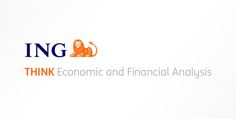Google launches Gemini Enterprise AI platform for workplace automation
Oil prices are lower this morning following Trump-Zelensky talks, with focus now turning to a possible meeting between the Ukrainian leader and Russian President Putin
Energy – Oil Markets Look Ahead to Zelensky- Putin Meeting
Oil prices are marginally lower in early morning trading today, following the meeting between Presidents Trump and Zelensky. The Ukrainian leader appears to have pushed for more clarity around US security guarantees and reportedly is willing to offer a $100bn weapons deal in return for such guarantees.
There was no critical breakthrough. It appears the next step is a meeting between Zelensky and Putin, possibly within two weeks. This will be crucial, marking the first time the leaders meet since the war started. A big sticking point relates to territory. Putin wants Ukraine to concede Donetsk and Luhansk in their entirety -- even parts of those regions not currently under Russian occupation.
Zelensky has made it clear this isn’t something he would accept. We’ll have to wait until such a meeting to know how much flexibility there is on both the Russian and Ukrainian sides.
Betting markets aren’t overly convinced that we’ll see a ceasefire before the end of the year. Polymarkets is showing a 38% chance of a ceasefire, well below the peak of 78% seen in March. The modest price action in the oil market this morning appears to fit with this view.
The other big issue relating to Russia-Ukraine is the secondary tariffs the US placed on India for its imports of Russian oil. The deadline (27 August) to come to a deal before tariffs are introduced is nearing. To make matters worse, trade talks that were set to take place in late August have reportedly been postponed.
Finally, Ukraine said it attacked Russia’s Druzhba pipeline system, which carries crude oil to parts of central Europe. Both Hungary and Slovakia report disruptions due to the attack. Russian oil flows to both countries via the Druzhba average a little more than 200k b/d.
Metals – China Steel Output Falls
Chinese steel output fell in July for a third straight month, hitting its lowest this year amid government efforts to control supply. Steel production fell 4% year-on-year to less than 80 million tonnes as Beijing tries to control supply and halt excessive competition. Over the first seven months, output fell 3.1% year on year to its weakest level since 2020.
Meanwhile, pollution control measures aimed at ensuring clear skies for next month’s military parade in Beijing are expected to exert downward pressure on steel production. Demand for steel in China remains subdued amid persistent weakness in its property sector. Last week’s disappointing data showed China’s economy slowing across the board, with industrial activity, investment, and retail sales falling well short of expectations.
Mainland imports of unwrought aluminium and aluminium products rose 38.2% YoY to 360kt in July. Cumulative shipments increased 1.5% YoY to 2.33mt in the first seven months of 2025. Looking at exports, the country’s alumina exports jumped 56.4% YoY to 230kt in July. Shipments increased 64.3% YoY to 1.6mt in the first seven months of the year.
Agriculture – China Grain Imports Under Pressure
China Customs data shows that corn imports declined by 94.9% YoY (-63% month on month) to 60kt in July. Cumulative imports fell 93% YoY to 840kt for the first seven months of the year. High domestic production, large stockpiles, and government-imposed restrictions on feed grain imports reduced demand for imported corn. Meanwhile, monthly wheat imports fell 48.3% YoY to 410kt last month, while cumulative imports are down 76.4% YoY to 2.4mt.
The latest numbers from the Institute for Agricultural Market Studies (IKAR) show that Russia’s soft wheat production could rise to 85.5mt for the 2025 harvest, higher than a previous estimate of 84.5mt. This increase is primarily due to higher-than-expected yields in the Central and Volga regions and stronger yields in the Urals and in Siberia. The group also increased wheat export projections by 1mt to 42.5mt for the 2025/26 season.
Disclaimer: This publication has been prepared by ING solely for information purposes irrespective of a particular user’s means, financial situation or investment objectives. The information does not constitute investment recommendation, and nor is it investment, legal or tax advice or an offer or solicitation to purchase or sell any financial instrument. Read more
